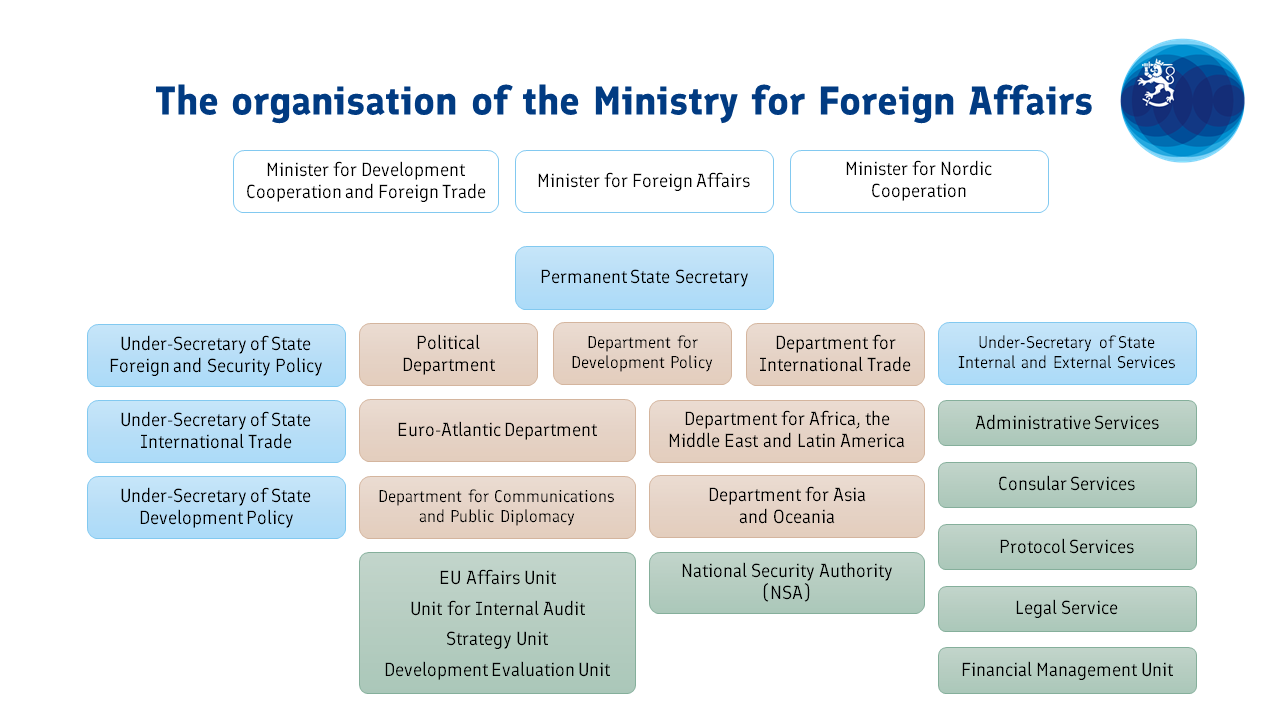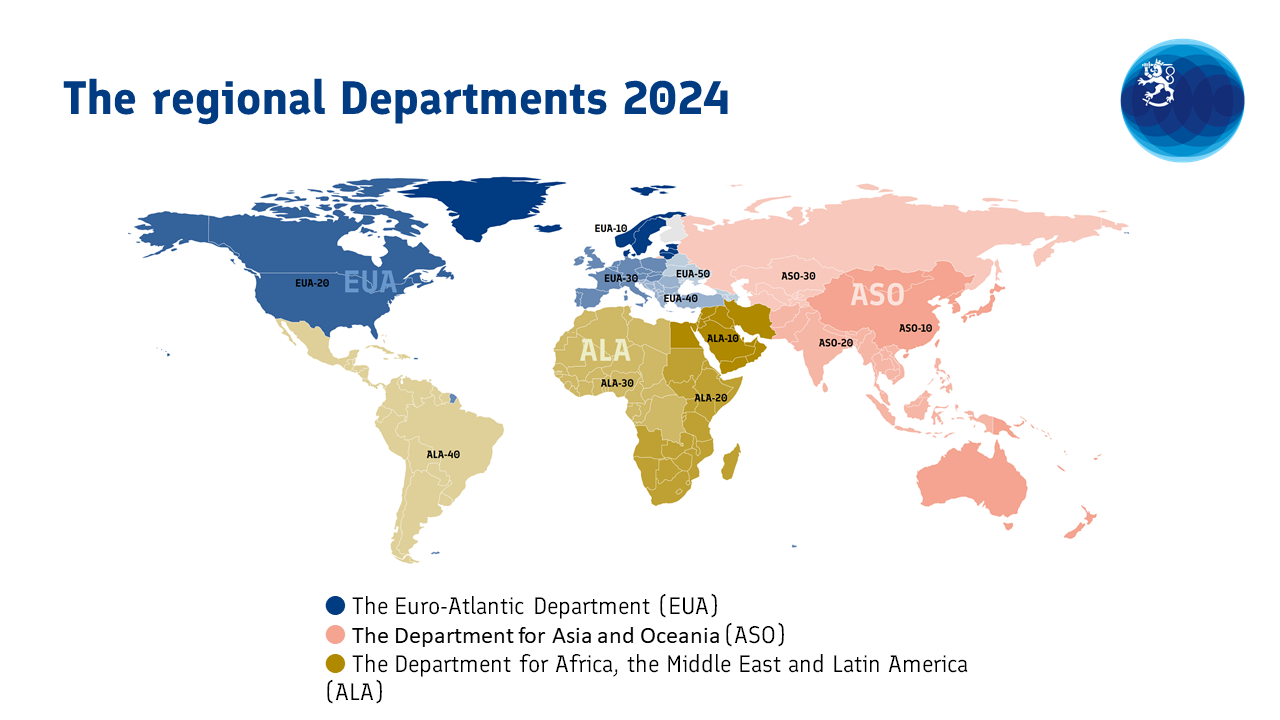Foreign Ministry’s organisational reform emphasises teamwork
The reform of the Foreign Service of Finland took a step forward on 1 August, when the reorganisation of the Ministry for Foreign Affairs and the updated rules of procedure took effect. The purpose of the organisational reform is to lay a suitable foundation for the Ministry’s work in the current international situation and in terms of Finland’s foreign policy change. At the same time, cooperation across organisational boundaries has become even more important.

Key organisational changes
The reformed organisation is described in the Ministry’s Rules of Procedure. There are three regional departments instead of the previous four. The area covered by the Department for Russia, Eastern Europe and Central Asia has been divided between two reformed departments.
- The Euro-Atlantic Department connects Europe with the United States and Canada. The Department covers Finland’s EU partners and NATO allies. It extends all the way to the Caucasus in the east, thus including all EU candidate countries. The Euro-Atlantic Department continues the cooperation so far carried out between the former Department for Europe and Department for Russia, Eastern Europe and Central Asia.
- As its name suggests, the Department for Asia and Oceania covers almost the entire Asia-Pacific region, including Russia and Central Asia, which were formerly under the remit of the Department for Russia, Eastern Europe and Central Asia.
- The Department for Africa, the Middle East and Latin America brings together two southern continents. In line with the former departmental structure, it covers the Middle East, including the Persian Gulf region.
Reorganised units
The new EU Affairs Unit brings together the work to coordinate and influence EU affairs, which was formerly the responsibility of the Department for Europe, the Political Department and the Department for Development Policy. The Unit for Policy Planning and Research is now the Strategy Unit. The Unit focuses on planning, foresight, analysis and the preparation of policy guidelines in cooperation with the departments.
The EU Affairs Unit and the Strategy Unit are subordinate to the Permanent State Secretary and not part of the departmental structure.
Bringing together expertise in topical themes
The Unit for Technology and Sustainability in the Department for International Trade is the technology foreign policy hub. The legal expertise on international sanctions is concentrated in the new Unit for Sanctions in the Legal Service. The security function in the Administrative Services covers security, information security and cyber security.
The new Department for Communications and Public Diplomacy focuses on communications aimed at exerting international influence. The Department is divided into three units instead of the previous four.
The Department for Development Policy has also been reorganised with the number of units reduced from eight to seven.

Cooperation across boundaries
The purpose of the organisational reform is to lay a suitable foundation for the Ministry’s work in the current international situation and in terms of Finland’s foreign policy change. However, the rapidly changing global situation does not fit into organisational structures. In addition, nearly all our key functions are large in scope and extend to numerous other operating units besides the ones in charge. This is why our ability to cooperate across organisational boundaries is all the more important to ensure that the Ministry can achieve the best possible results as a team.
Roles that cross departmental and administrative boundaries are one way of strengthening the Ministry’s overall internal, cross-administrative and international activities.

